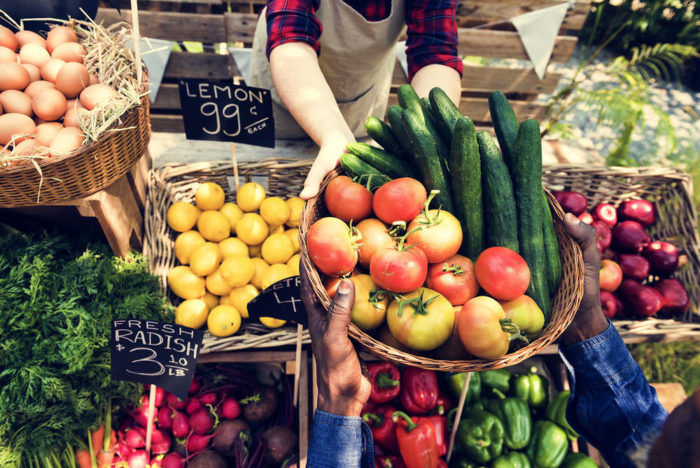But I don’t have any farmers markets nearby. Should I give up?
“It’s easy to shop at a farmers market in the city, but out here in the country, it’s not so easy.”
That’s what I felt a year ago at the beginning of the pandemic staying at my mom’s house, a couple hours northwest of New York City. People said it to me all the time when I told them where I learned to shop. I said it too for years before my experiment avoiding packaged food.

A couple towns away from my mom’s house, some small farmers markets existed, but their web pages said the earliest started in May and it was March. The local supermarket would carry some local produce in the summer. It had a bulk section, but mainly carried dried fruit, nuts, and candy, not legumes. So for the first few shopping trips I felt I had to accept produce shipped from California and around the world, despite actually being closer to farms, ironically. I still kept the bags my beans and other food came in so I could include them in my trash when I returned home.
Do I give up?
But the thought kept weighing on me, “the farmers want us to buy their food. Even if only beets, radishes, and parsnips, I want to buy and support them.†I also knew from years of effort switching from industrial food and doof to local that on the other side of that effort lay community and connection. If farmers markets existed sometimes, the people were around.
I went back to the web pages and found how to contact the organizers. They were happy to hear from me and to help. They told me about a newly starting program called “Food Hub.†During the week, farmers would tell the Hub their inventory. On Friday mornings shoppers could place an order to pick up a few days later. Since it was first-come-first-serve, Friday mornings became a family event when we’d get on the Hub web site and order.

I also asked the supermarket manager if I could special order from their bulk supplier. If their regular shoppers wouldn’t buy enough legumes, I wouldn’t mind ordering a fifty-pound bag. He put me in touch with his supplier to make it happen. I could have bought them from any number of online bulk vendors, but I like local community and wanted to show demand.
Family food coop roots
Growing up in Philadelphia in the 1970s, my parents formed with other parents a shopping club. They would pool orders and take turns driving weekly before dawn to the wholesale market in South Philly to buy several families’ worth of produce at lower prices and higher quality than at supermarkets. That shopping club dovetailed into a local coop called Weaver’s Way that I associate with home. People who join these days get five digit membership numbers. I feel vicarious pride that my dad’s number is 55. The coop is now a bedrock of that community, not that far from Tommy’s Hill. It’s easy to presume it just happens to exist. It took years to build and early morning drive a few times a year, but no special skills. As a child, it meant no white bread, baloney, and bright yellow mustard sandwiches until summer, but looking back, it gave me the expectation that farmers want people to buy what they grow, communities want to form, food brings family together, and the work is worth it.
Read my weekly newsletter

On initiative, leadership, the environment, and burpees
Pingback: How Close Are We To July 4th, 1775? » Joshua Spodek
Pingback: Disconnecting from the Electric Grid in Manhattan: Ars Technica Reader Questions Answered » Joshua Spodek